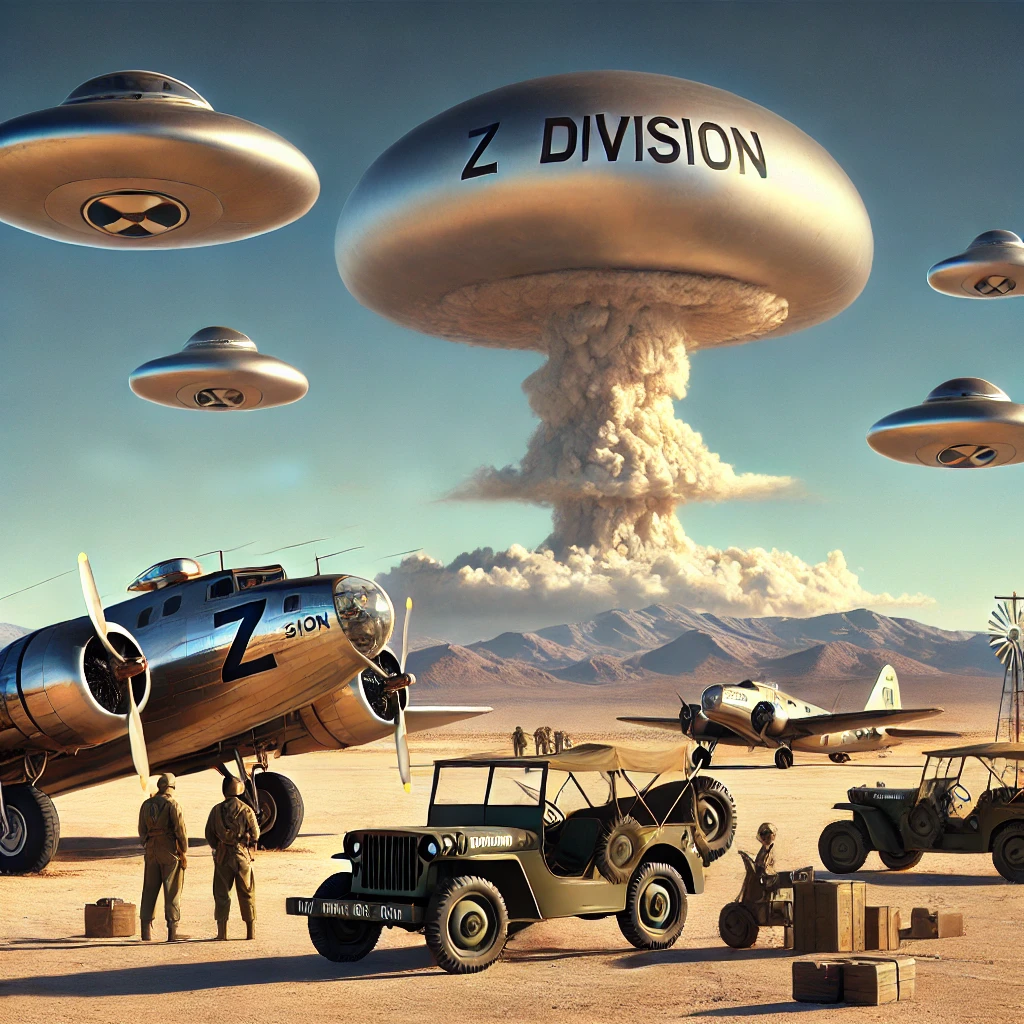Z Division

The “Z Division” has been used to designate specialized units within U.S. national laboratories, each with distinct roles and histories. In July 1945, during the Manhattan Project, the “Z” Division was established at Oxnard Field, now part of Kirtland Air Force Base near Albuquerque, New Mexico. Oxnard Field was strategically chosen due to its proximity to Los Alamos Laboratory and the relative isolation it provided, which was essential for the secretive nature of the Manhattan Project.
This division was responsible for ordnance design, testing, and assembly, serving as the engineering arm of the Los Alamos Laboratory. Its primary mission was to ensure the reliability and functionality of nuclear weapons, bridging the gap between theoretical research and practical application. Over time, the Z Division evolved into what is now known as Sandia National Laboratories. Today, Sandia continues to play a crucial role in the development, testing, and maintenance of the United States’ nuclear arsenal, contributing to national security and technological advancements in defense systems. Notable projects include the development of advanced radar systems, cybersecurity measures, and renewable energy technologies that support national defense infrastructure.
In 1965, Lawrence Livermore National Laboratory (LLNL) established its own Z Division, also known as the Special Projects Group. This division was created to provide the U.S. Intelligence Community with technical assessments of foreign nuclear programs and weapons capabilities. Comprising a team of scientists and engineers, LLNL’s Z Division was instrumental in analyzing and understanding the significance of Soviet nuclear weapons tests during the Cold War. For instance, their analysis of the Soviet “Tsar Bomba,” the most powerful nuclear weapon ever detonated, provided critical insights into the extent of Soviet capabilities and intentions.
In a recently released previously secret footage from Russia, the detonation of the Tsar Bomba—the most powerful hydrogen bomb ever tested—shows the immense destructive force of the 1961 blast. The video begins with the bomb’s release, as the crew dons protective goggles while the aircraft maintains an altitude of 4,000 meters. A countdown follows: three seconds left, two, one, zero—explosion. The blast is accompanied by an extraordinarily intense flash of light. At that moment, the carrier plane was already retreating to a safe distance. Despite heavy cloud cover, the subsequent glow was visible within a vast radius. A colossal mushroom cloud rapidly expanded, and just seconds after the explosion, the diameter of the nuclear column measured about 10 kilometers. The cloud continued to rise slowly, ultimately reaching an altitude of 60 to 65 kilometers, a terrifying testament to the bomb’s unprecedented power.
Their work informed U.S. defense policies and strategic planning, helping to shape the arms control negotiations and deterrence strategies of the era. The name “Z Division” was selected simply because most other letters had already been assigned to existing divisions within the laboratory.
Beyond their traditional roles, there are indications that Z Division’s scope may extend into broader national security concerns. In Forbidden Science 6, a book by Jacques Vallée, former CIA officer Jim Semivan recounted being told he would “get a visit from Z-Division” following discussions on unconventional experiences, including encounters that left both him and his wife injured. The term “Z-Division” appears in this context, highlighting a possible distinction or evolution in how the division is referenced when addressing unconventional matters. This suggests that Z Division’s remit might also include sensitive intelligence work that crosses into areas of unexplained phenomena, reflecting the evolving nature of national security threats and intelligence gathering. Vallée’s book, known for looking into the intersection of science and unexplained phenomena, provides a rare glimpse into how intelligence agencies may approach anomalous encounters and integrate such data into broader security frameworks.
Both iterations of the Z Division have been integral to the United States’ national security efforts. While Sandia’s Z Division focused on the development and maintenance of nuclear weapons, LLNL’s Z Division specialized in intelligence analysis of foreign nuclear threats. Together, they have contributed to a comprehensive approach to national defense, combining engineering innovation with strategic intelligence to safeguard the nation’s interests. These divisions have also collaborated with other national security agencies, such as the Department of Defense and the CIA, to ensure a unified approach to addressing nuclear threats and advancing defense technologies. The connection between Z Division and UFO phenomena, as hinted at in Vallée’s work, underscores the potential for these divisions to engage in the study of non-conventional threats, further broadening their already significant impact on national security.


